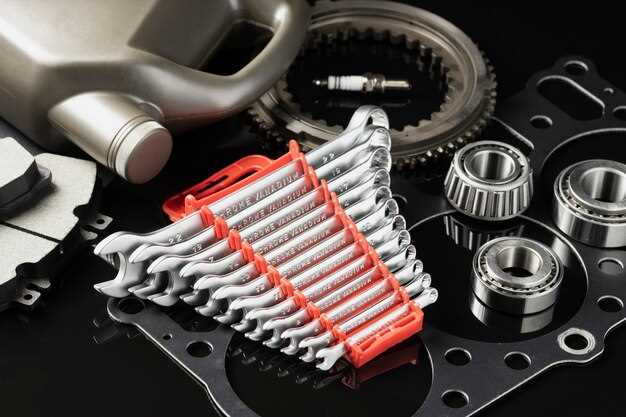
When it comes to motorcycle maintenance and upgrades, the choice between OEM (Original Equipment Manufacturer) and custom parts can significantly impact performance, aesthetics, and overall riding experience. Each option presents its own set of advantages and disadvantages that cater to different needs and preferences among riders. Understanding these factors is crucial for making informed decisions that align with your motorcycle goals.
OEM parts are manufactured specifically for your bike model, ensuring a perfect fit and reliable performance. They often come with warranties and are backed by the manufacturer’s reputation. However, their higher price point and limited variety can be drawbacks for those seeking personalized modifications or enhancements. On the other hand, custom parts offer a unique opportunity for riders to tailor their motorcycles to their individual style and performance preferences. While these parts can enhance aesthetics and offer improved functionality, they may also come with risks related to compatibility, installation challenges, and potential voiding of warranties.
This article delves deeper into the pros and cons of OEM and custom motorcycle parts, providing insights that will help you navigate your choices wisely. By weighing these considerations, you can better determine which option suits your motorcycle needs and riding ambitions.
OEM and Custom Motorcycle Parts Comparison
When it comes to motorcycle maintenance and upgrades, choosing between OEM (Original Equipment Manufacturer) and custom parts is a significant decision for riders. Each option has its own advantages and disadvantages that can affect performance, aesthetics, and overall satisfaction.
OEM Parts are designed specifically for a particular make and model of motorcycle. They are made by the manufacturer, ensuring quality and compatibility. One of the major advantages of OEM parts is their reliability; since these parts are factory-made, they typically meet the original specifications of the motorcycle. This means that they often offer better durability and performance compared to non-original options.
However, there are some downsides to using OEM parts. They can be significantly more expensive than custom alternatives. Additionally, the range of options is often limited to what the manufacturer offers, which may not satisfy riders seeking unique modifications or enhancements.
On the other hand, custom motorcycle parts allow for personalization and creativity. Riders can enhance their bikes’ performance and aesthetics to fit their unique style and preferences. Custom parts are often available at a variety of price points, allowing for flexibility in budgeting. Moreover, the aftermarket industry provides a wide selection of high-performance components that can improve handling, power, and overall riding experience.
Nonetheless, custom parts come with potential risks. The quality may vary greatly depending on the manufacturer, and not all custom parts are designed with the same standards as OEM components. Installation can also be a challenge, and improper fitting may lead to performance issues or even safety hazards.
Ultimately, the choice between OEM and custom motorcycle parts hinges on the rider’s individual needs, budget, and maintenance philosophy. Riders who prioritize reliability and factory specifications may lean towards OEM, while those desiring to personalize their motorcycles and enhance performance might opt for custom solutions.
Cost Analysis of OEM vs. Custom Motorcycle Parts

When it comes to motorcycle components, understanding the financial implications of choosing between OEM and custom parts is crucial for riders. OEM parts are original equipment manufacturer components, designed specifically for a particular motorcycle model. In contrast, custom parts are tailored modifications or aftermarket alternatives that may not be designed exclusively for one model.
The initial cost of OEM parts is generally higher due to their branding and guarantee of quality. These parts typically come with a warranty and assurance of compatibility, which can save riders from potential costs associated with installation issues or premature failure. Nevertheless, this upfront expense is often justified by the longevity and reliability they offer.
On the other hand, custom parts can be less expensive, especially when pursuing specific aesthetics or performance enhancements. Riders frequently turn to these alternatives to achieve a unique look or to gain improved performance at a lower cost. However, it’s important to consider potential hidden costs, such as installation fees or the necessity of further modifications, which can add to the overall expenditure.
Moreover, while custom parts may initially seem like a more budget-friendly option, their quality can vary significantly. Some custom components may not meet industry standards, leading to longer-term expenses tied to repairs or replacements. Therefore, it is vital for riders to thoroughly evaluate the reputation of custom part manufacturers before making a purchase.
In summary, the cost differential between OEM and custom motorcycle parts often reflects their respective advantages and drawbacks. While OEM parts provide reliability and compatibility, custom parts offer affordability and personalization at the risk of potential quality issues. Riders must assess their priorities and budget to make an informed decision that aligns with their motorcycle needs.
Performance Differences: OEM Parts Versus Custom Solutions
When it comes to enhancing motorcycle performance, the choice between OEM (Original Equipment Manufacturer) parts and custom solutions is critical. Each option offers distinct advantages and drawbacks that can significantly affect the riding experience.
OEM Parts
OEM parts are designed and manufactured by the motorcycle’s original maker. Here are some key performance traits:
- Reliability: OEM parts are built to meet the exact specifications required by the manufacturer, ensuring consistent performance.
- Compatibility: These parts are guaranteed to fit seamlessly with the motorcycle’s existing systems, reducing installation issues.
- Warranty Protection: Most OEM components come with a warranty, providing peace of mind in case of malfunction.
- Resale Value: Using OEM parts can maintain the motorcycle’s resale value, as buyers often prefer original components.
Custom Solutions
Custom parts offer the potential for improved performance and personalization, but they come with their own set of considerations:
- Performance Enhancement: Custom solutions can be tailored to meet specific performance goals, such as weight reduction or increased horsepower.
- Unique Design: They allow for customization in aesthetics, enabling riders to express their individuality.
- Potential for Innovation: Many aftermarket manufacturers focus on innovative technologies that may outperform OEM parts.
- Installation Challenges: Custom parts may require modifications to existing components, leading to possible complications during installation.
In summary, when considering performance differences between OEM and custom motorcycle parts, riders must evaluate their specific needs. While OEM parts provide reliability and perfect compatibility, custom solutions can enhance performance and offer personalization options. Ultimately, the best choice will depend on the rider’s goals and preferences.
Installation and Compatibility Issues with OEM and Custom Parts

When considering motorcycle parts, both OEM (Original Equipment Manufacturer) and custom options present unique installation and compatibility challenges. OEM parts are specifically designed for a particular make and model, ensuring a precise fit and seamless integration with the motorcycle’s existing systems. However, the cost of OEM parts can be significantly higher than their custom counterparts, which may deter some riders.
On the other hand, custom motorcycle parts offer flexibility in design and performance enhancements, allowing owners to personalize their bikes. Despite these advantages, compatibility issues may arise. Many custom parts are made to fit a wide range of models, which can lead to discrepancies in fitting, alignment, and overall functionality. This can require additional modifications, increasing both the complexity of the installation process and the associated costs.
Furthermore, using custom parts can sometimes void warranties or create challenges in maintaining the motorcycle’s overall performance standards. Riders must be cautious about sourcing high-quality custom components that meet or exceed safety regulations. In contrast, OEM parts provide peace of mind regarding reliability and performance, as they undergo rigorous testing before reaching consumers.
Ultimately, the choice between OEM and custom motorcycle parts involves weighing the benefits of fit and safety against the desire for personalization and potential cost savings. Riders should carefully evaluate their specific needs, budget, and the long-term implications of their choices, ensuring that any installed parts–whether OEM or custom–meet the necessary compatibility and performance criteria.
